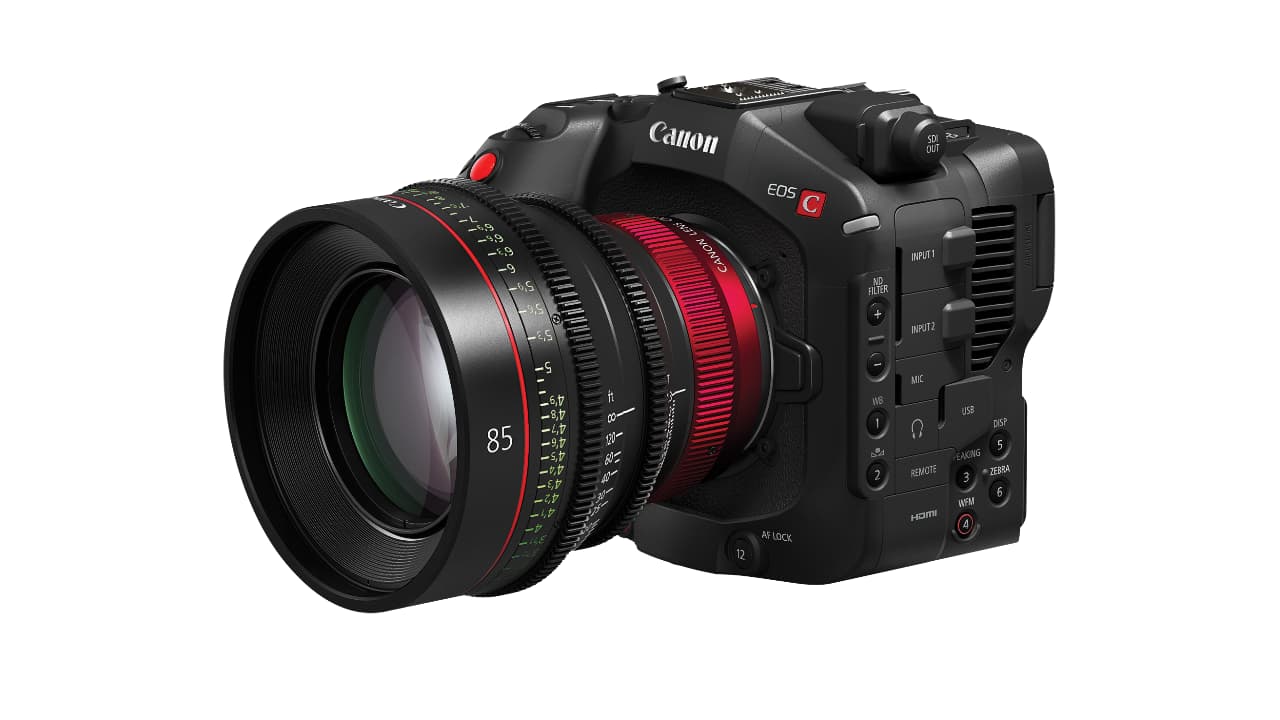
The successor to the Canon C70, the EOS C80 features a 6k full-frame, back-illuminated stacked CMOS sensor, triple-base ISO, dual pixel CMOS AF II, and 12G-SDI.
Plus ça change, plus ce la mȇme chose: the more that things change, the more they stay the same. When the Canon EOS C70 was introduced in 2020 it was a dedicated 4K video device that cost $5499. The new Canon EOS C80 is now a full-frame 6K device but comes in at the same price of $5499, which is an impressive feat. Inflation alone should have added $1000 onto that pricing.
Users are going to get a fair deal more with the unit too, Canon effectively saying that the C80 has been designed for filmmakers who want full fat features in a low fat body.

In 2024 that means a 6K full-frame, back-illuminated CMOS sensor, with triple-base ISO, allowing the camera to deliver imagery across a wide range of lighting conditions. The base ISOs of 800, 3200, and 12,800 maximize the full dynamic range of the camera, while the unit also features Canon’s latest Dual Pixel CMOS Autofocus, Dual Pixel AF II.
In addition to moving to a full-frame sensor and what should be excellent 4K output from the 6K oversampling, the EOS C80 has also improved on its predecessor by adding 12G-SDI output, which enables uncompressed transfer of a video signal with a secure cable connection. The camera’s design includes a variety of other interfaces including HDMI, mini-XLR audio inputs, time code, built-in WiFi connectivity, and Ethernet. All this enables the camera to be controlled remotely via the IP-based XC Protocol using Canon’s Remote Camera Control Application or Multi-Camera Control App for iPhone.

It can record up to 6K30p in Cinema RAW Light. Other recording options include Canon’s standard XF-AVC codec which can record in 10-bit 4:2:2 with oversampling from the 6K sensor, which the company says creates rich detail and smooth imagery without the need for cropping the image from the sensor. Autofocus is enabled when recording in slow or fast motion at up to 4K120p (or at least it will be following a forthcoming firmware update which should be available before the camera is released).
There are two more recording codecs, XF-AVC S and XF-HEVC S. These were first introduced with the EOS C400 camera and feature an easy-to-manage naming system and folder structure, while recording in the familiar MP4 format and preserving metadata.

It’s compact and lightweight, the camera body weighing 1310 grams (2.9 lbs) and coming in at approx. 6.3 x 5.4 x 4.6 in. (160 x 138 x 116 mm), making deployment on a drone, gimbal, or tripod eminently feasible. Canon’s also proud of the ergonomics of the unit. It features a new, lightweight handle assembly, the Multi-function Shoe is located just above the LCD screen, and the joystick controller provides easy control and menu navigation.
Pricing and availability
The Canon EOS C80 will be available in November 2024 from the usual suppliers for an estimated $5499.
The spec sheet runs to 38 pages and you can find it here.

tl;dr
- The Canon EOS C80 is the successor to the Canon C70, featuring a 6K full-frame, back-illuminated stacked CMOS sensor, triple-base ISO, dual pixel CMOS AF II, and 12G-SDI.
- Despite the upgrade to a full-frame 6K device, the Canon EOS C80 maintains the same price of $5499 as its predecessor.
- The camera can record up to 6K30p in Cinema RAW Light, features various recording options including Canon’s standard XF-AVC codec, and enables autofocus when recording in slow or fast motion at up to 4K120p.
- Compact and lightweight, the Canon EOS C80 weighs 1310 grams (2.9 lbs) and offers enhanced ergonomics with a new, lightweight handle assembly and easy-to-use joystick controller.
Tags: Production Cameras Canon IBC2024


Comments